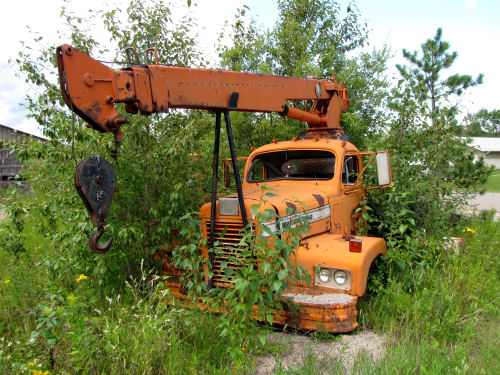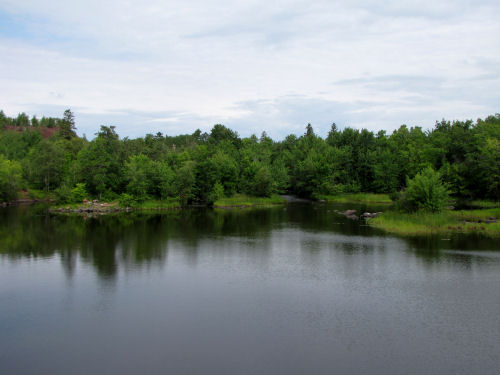Since I managed yesterday to stumble into pictures of a hike I never blogged about, I've decided to take us all back to this trip in 2009 for the next few days. I even accidentally hit the first day of that hike. There could be interruptions if something exciting happens. Or not.
Anyway, this was the longest continuous time that Marie and I ever were out. I had an obsession with completing the Minnesota miles of the North Country Trail that summer. We began by connecting the Chippewa National Forest with the Kekakabic Trail, a distance of 180 miles. Yesterday, I showed you the road miles that took us from the Chippewa into Grand Rapids (two days). There we picked up the paved Mesabi Trail.

The trail is not a true rail-trail, as many portions are not old rail bed. However, a lot of it follows the former Duluth, Missabe and Northern rail grade. This line opened northern Minnesota for iron mining. A lot of the landscape we saw was great hills of red ore tailings surrounded by lakes formed in the open pits. It had a certain beauty of its own.
Very little active mining remains. the companies are working very hard to reclaim the land, undo the ecological damage, and make the area attractive for recreation. Aspen trees are covering the tailing hills. Nature does heal itself, although sometimes it needs some help.

Along the way, we saw continuous reminders of the former industry, such as this nifty Diamond Reo truck.

The primary waterway we now followed was the Prairie River, which flows into the Mississippi in Grand Rapids.

Since that time, we have encountered a much longer floating bridge in Ohio, but in 2009, this was the first one we had ever crossed.

You know me... I was greatly interested in the wildflowers. Prairie clover, Petalostemum villosum, was one we had learned in North Dakota, but it always brings oohs and aahs when in bloom.

Culver's Root, Veronicastrum virginicum, can be seen throughout the northeast. It's not just a prairie plant.

This one had me stumped for a while. Sadly, that's because it's native to the western US, but is considered invasive in Minnesota. It's bigleaf lupine, Lupinus polyphyllus. Yup, pretty much like the common one, only much bigger and much easier to grow. "So who cares which one grows?" you ask. The endangered Karner Blue Butterfly needs the common one for its life cycle. Here, it's gone to seed, busy pushing the native one out of it's natural range.

This was August 5, 2009. Day three of the hike, 16 miles, total 47.8.
 | See Chippewa to Grand Rapids |
| if you like this blog, click the +1 | |
2 comments:
Great pics!
This was fun to travel on this little hike with you in the pictures and story. This is a nice break from all the snow I have right now. I especially like the bridge. Bridges and wooden walkways are always my favorites.
Post a Comment